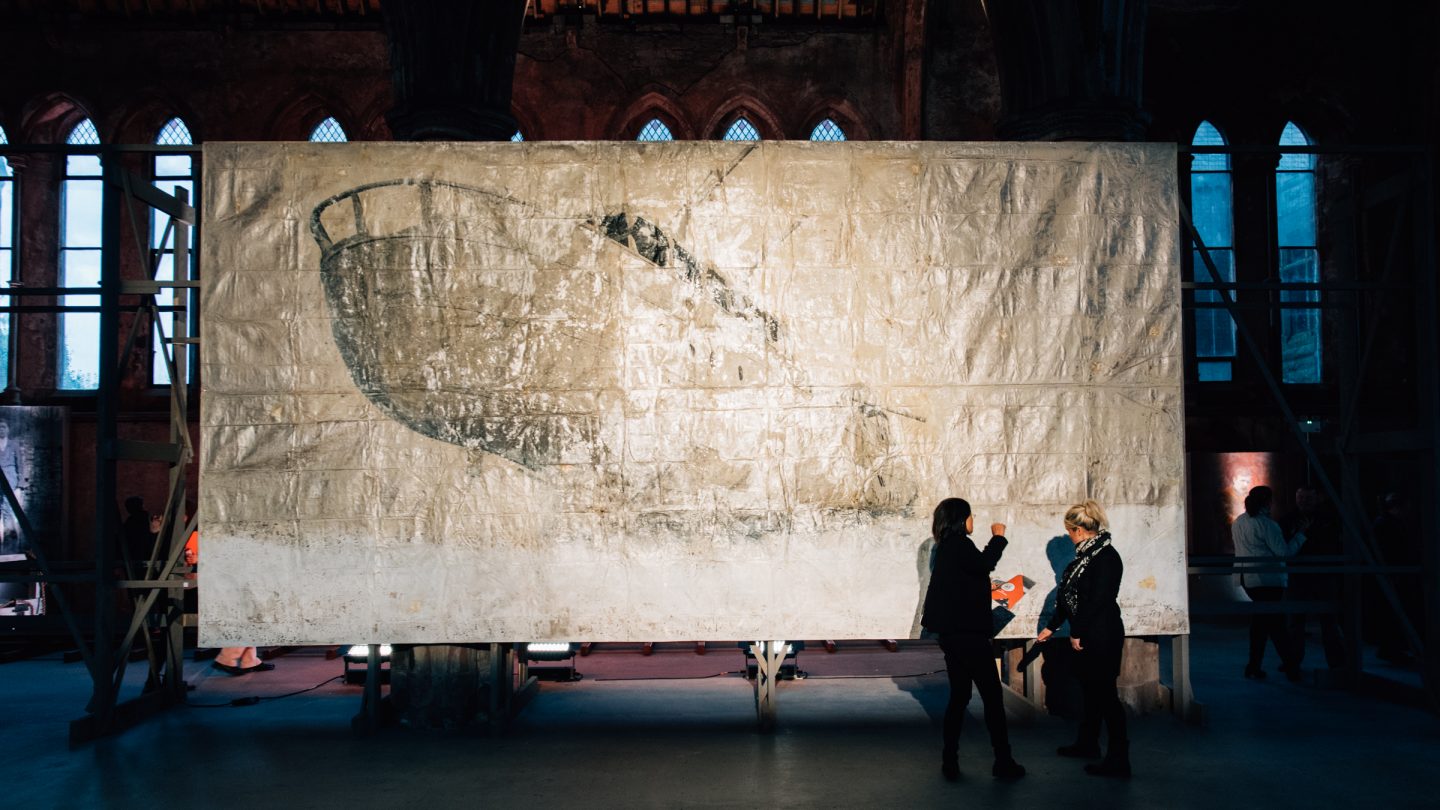
An Exhibtion of Paintings, Painted Constructions & Scuplture
The Tempest: Ireland. Memory. Identity.
Hughie O'Donoghue
This exhibition of paintings, painted constructions and sculpture draw on the artist’s own experience and connections, people and places that he knew or knew of.
In this exhibition for Belfast International Arts Festival, O’Donoghue has expanded on the themes explored in the body of work One Hundred Years and Four Quarters commissioned by Galway International Arts Festival in 2016. Foregrounded are three new major works, some over six meters in length and an extended version of the moving sculpture A Distant Thunder.
Cinema and cinematic scale are one of the motifs of the new tarpaulin paintings exhibited in Belfast which draw their inspiration from (the) early silent cinema, in particular the work of F. W. Murnau, himself a soldier, pilot and survivor of the First World War. The ghostly image of the departing ship (actually the wreck of The Plassy on Inis Oirr) evokes The Demeter of Bram Stoker’s Dracula as envisioned by Murnau in his 1922 masterpiece of German Expressionist cinema, Nosferatu.
The storm that was the last one hundred years is the starting point. Looked at from the perspective of various events O’Donoghue likens the works to the four differing accounts of a murder in Kurosawa’s 1951 film Rashomon. In the film the murder of a Samurai is recounted by four characters; a bandit, the Samurai’s wife, his own ghost and a woodcutter. Their stories are mutually contradictory and self-serving.
The four characters O’Donoghue has evoked are the revolutionary, the soldier, the sailor and the rural farmer.
Through their differing perspectives the events that have shaped the century are alluded to in an attempt to explore the subjective and fugitive nature of truth.
Hughie O’Donoghue is one of Ireland’s leading international artists. He was elected as a member of the Royal Academy, London in 2009 and to Aosdána in 2013.